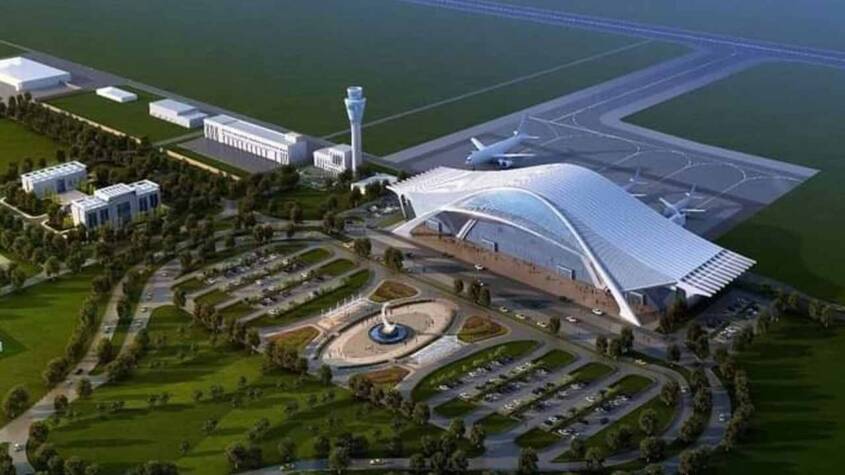Prime Minister Shehbaz Sharif is expected to inaugurate the new Gwadar International Airport on March 23 in Balochistan’s Gwadar district.
The Civil Aviation Authority, as per the sources, has completed the safety check of the airport and declared it clear and fully prepared for flight operation.
The government is likely to inaugurate flight operations at the airport on Pakistan Day March 23, they added.
The airport is located in Gurandani, which is 26km east of Gwadar city. Financing of the project was done through the Chinese government’s grant under the China–Pakistan Economic Corridor (CPEC) project and its cost was estimated at $230 million.
According to the CPEC website, the airport’s construction created 3,000 jobs. The groundbreaking ceremony of the airport was held on March 29, 2019, by Pakistan Tehreek-e-Insaf (PTI) Chairman Imran Khan — who was the prime minister at the time.
Implementation of the project was handed over to the Aviation Division.
Meanwhile, its construction work began on October 31, 2019. As per the China-Pakistan Economic Corridor website, the expected completion date of the project was March 2023.
“Construction of New Gwadar International Airport (NGIA), along with allied facilities for a new airport that will be capable of handling a combination of ATR 72, Airbus, (A-300), Boeing (B-737), and Boeing (B-747) for domestic as well international routes,” the web portal mentions regarding the much-anticipated facility.
Earlier today, Minister for Planning and Development Ahsan Iqbal chaired a review meeting on the “Test flight at the new Gwadar International Airport” in Islamabad.
According to a tweet by the ministry, the meeting discussed progress on projects including CAA Complex, landslide infrastructure, cargo building, Airports Security Force (ASF) Camp for 1,050 Personnel, and 132kV grid station.
The federal minister also instructed CAA to complete all development projects before September 2023 for the airport. He also asked the authority to present a plan of action within three days for execution and implementation of the remaining tasks.
















